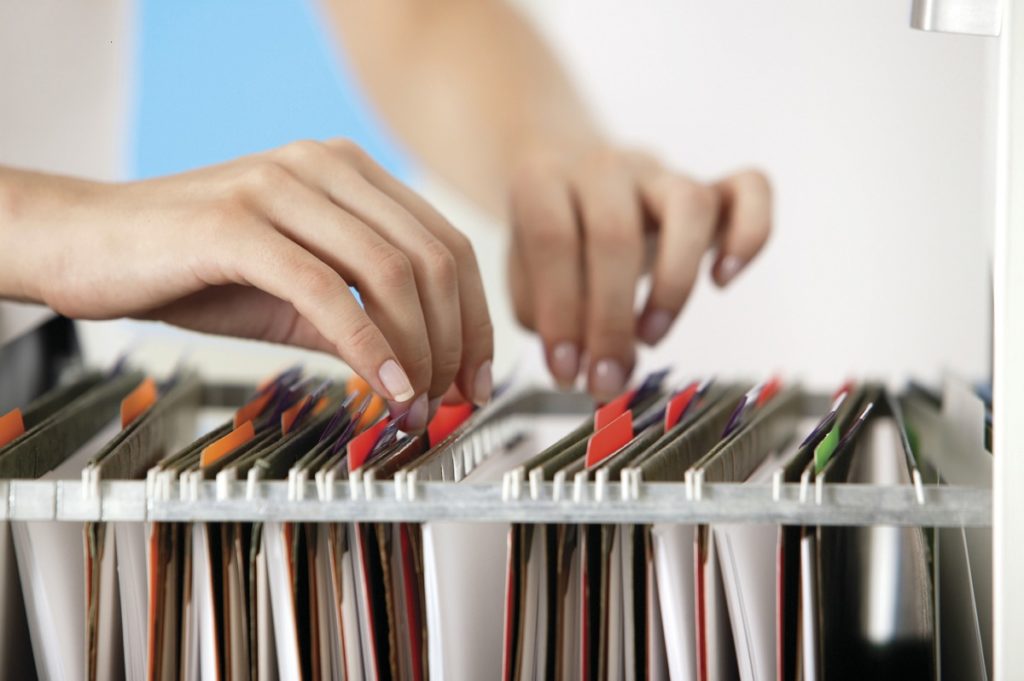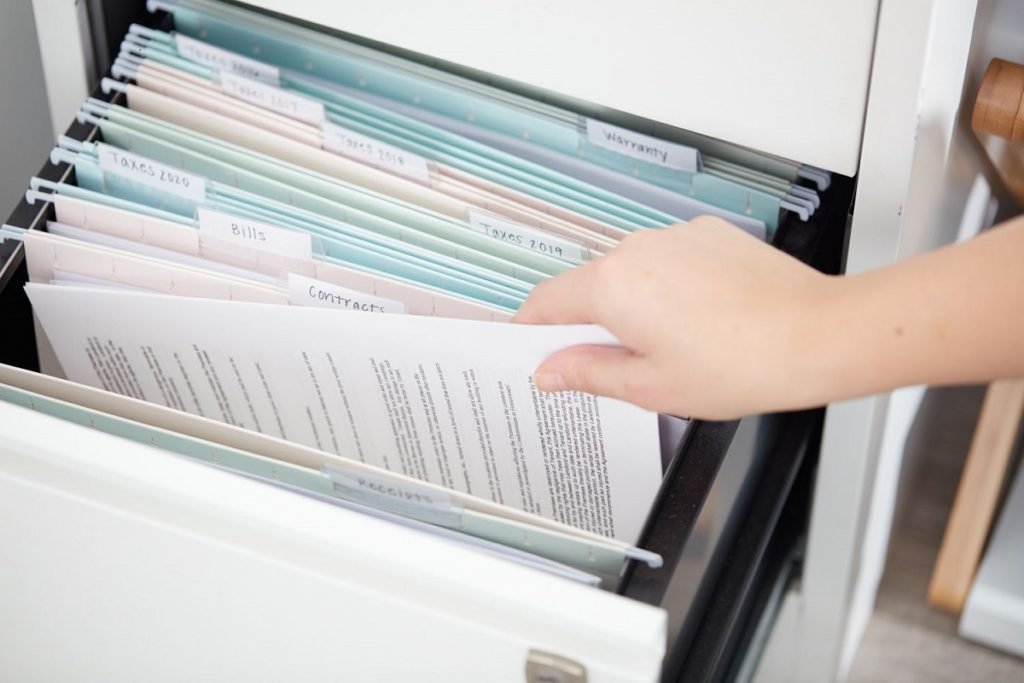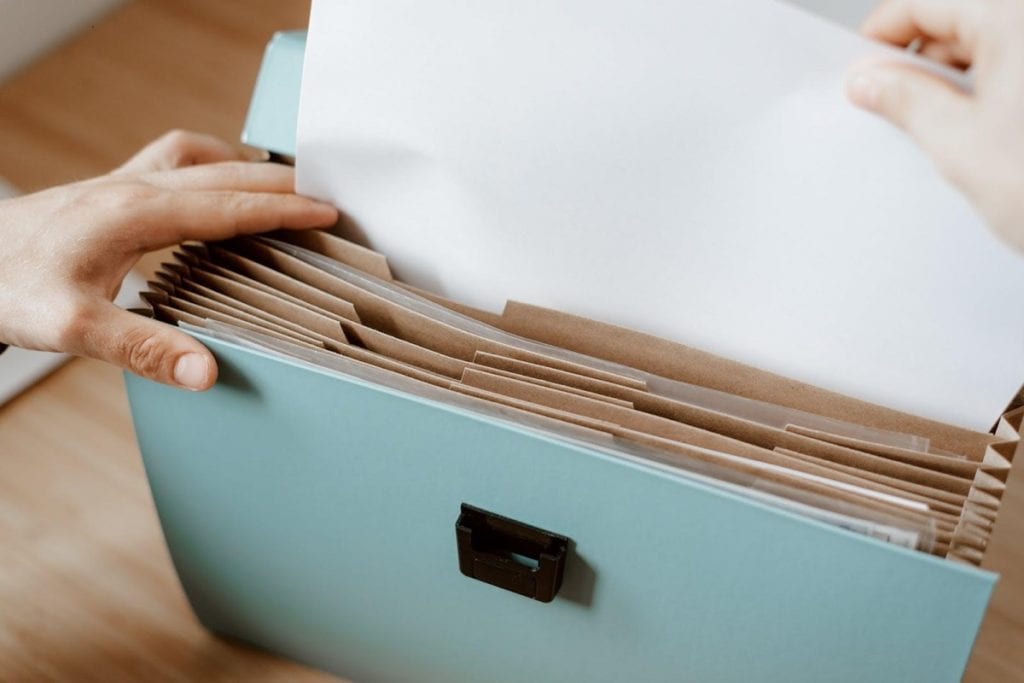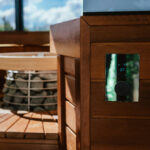We all have important documents that we don’t want to lose track of. Stop panicking over where they are by implementing a filing system to safely store them.
The ability to keep your crucial documents organized is only as good as the home filing system you put in place.
If you work from home (or just keep a lot of personal paperwork on hand), keeping them arranged and classified can save you a lot of trouble down the road.
Not sure how to set up an orderly filing system that works for you and your life?
Then stay put. We’re going to share easy tips to set up a home filing system.
Follow these steps, and you can have your new and improved paper storage method set up today.
Get Rid of Your Current Filing System (If You Have One)
The best way to start a new filing system is to dismantle your old one.
If you never had one to begin with, then you’re already starting with a clean slate.
To do away with your current filing system, remove every single piece of paper from your filing cabinet, folders, desk drawers, and what have you. Set the documents aside in a pile.
If you end up with reusable folders, set these aside as well, but remove and toss away any existing labels.
You want to start as fresh as possible, after all!
Gather Your Documents
If you don’t have an existing filing system to clear out, you need to hunt down every loose piece of paper that’s been hanging around willy nilly.
Gather papers from under paperweights, in envelopes, and at the bottoms of drawers. Create your own essential documents pile on a desk or table in front of you.

Purchase Necessary Filing Supplies
Now that you know what you’re working with, you need to pick up new supplies to help you meet your organizational goals.
You will need:
Filing Cabinets
Consider something like this neat seagrass rolling cabinet or a more traditional metal cabinet with multiple drawers.
Folders
First off, you’ll need hanging file folders for your cabinet.
Secondly, pick up some classification folders for a series of related documents (like your mortgage paperwork).
Last but not least, grab those classic manila file folders with tabs.
Shredder
This is an absolute document-organizing essential. If you don’t already have one, it will make all the difference in your home filing system’s efficacy.
Know what documents to shred and which to keep by checking out this article.
Label Sheets
You may prefer adhesive labels that work with laser printers or that you handwrite on to label a folder’s contents.
If you want to start a color-code system, buy labels in an array of colors. If that does nothing for you, stick with plain white labels.
Accessories
Ensure your printer has enough ink if you’re printing labels. Stock up on pens or fine and ultra-fine Sharpie markers for labeling.
Sort What You Want, Toss What You Don’t Need
Now it’s time to painstakingly examine every document! It may not be fun, but it is necessary.
To do so, sort your papers into four categories:
- Archive: the papers you only need to reference periodically, like once or twice a year.
- Common: those you refer to regularly, at least once per month.
- Shred: those documents you no longer need but that you don’t feel comfortable throwing away. (Things like old bank statements from a defunct account, personal letters that don’t serve a purpose, etc.)
- Recycling: you know you’ll never need these papers again, and they do not contain sensitive information.
Now you should have four neat, tidy piles that you’re ready to file or toss!
Set Up Your New Filing System
With your documents sorted (minus those you recycled or shredded), it’s time to put them in their proper place.
You need to sort through your intended Archive and Common documents again, keeping like documents together.
After that, grab your folders and labels and get ready to organize! Dedicate one or two folders to specific life categories.

Categorize and Label
With your supplies at hand, you must create folder categories and label each folder thusly. We put label wording in bold, though you can phrase labels differently if that’s easier for you!
For example, you’ll want a folder for work-related papers, such as contracts and pay stubs you’re saving for tax season.
Start a new folder with essential documents relating to your family, such as your children’s birth certificates. If you have little ones who give you finger paint masterpieces you utterly cherish, start a new folder and pop those babies in.
You should also start a series of folders related to your serious finances. These are things such as property deeds, apartment leases, and legal titles to your cars and boats.
Marriage licenses, divorce decrees, and other paperwork a lawyer or court of law doled out should be in a folder labeled legal.
If you’re writing out your labels by hand, be sure you are doing so in permanent ink. However, if your handwriting is more cacography than calligraphy, do yourself a favor and type and print out each label.
Filing
Now that you have your work, family, legal, and financial documents in their properly labeled folders, they’re ready for filing.
First, divide these folders into two piles (we know, yes, just one more time!). Divide them according to their prior Archive and Common designation.
Your Common documents will likely be the folders pertaining to your family and work-related papers. Your Archive folders will be your legal and major financial statements.
Put your Archive document folders in either the lower drawer of your cabinet tower or at the back of your single-level rolling cabinet. Conversely, place your Regular docs where you can access them with ease; the top drawer of your tower cabinet or at the front of your rolling cabinet.
Depending on how many folders and documents you have, this can take time and be tedious. But trust us, doing this step well, thoroughly, and neatly is the entire point. And, it will make accessing these papers in the future much simpler.

Maintain, Maintain, Maintain
This may be the most challenging step of all!
Once you have your documents labeled, categorized, and stored, you must keep them that way.
When you need to reference a document, leave its folder on your desk or table and return it immediately after use. Then immediately put it back in its filing cabinet.
If you don’t ever put off the filing, then you shouldn’t have a problem keeping your new system neat and working for you.
Conclusion
Organizing paperwork doesn’t come naturally to us all. And the more life you live and assets you acquire, the more the critical documents seem to build up.
But that’s okay; that’s how it goes! Implement a simple filing system like this, and you’ll no longer have to stress over keeping your papers organized. (Or struggle to find that one key document at the last minute!)
The only thing you need to do now is to maintain this glorious system. Once you get the knack for it, you’ll never have to fret over document organization again.
[Author bio]
Caitlin Sinclair is the Property Manager at Reveal Playa Vista with five years of property management experience and many more in Customer Service. She shares her passion for her community and looks forward to making Reveal Playa Vista the place to call home.






